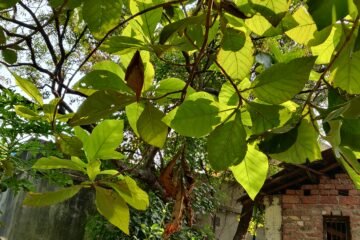The pale-billed flowerpecker is defined by three words.
Quid pro quo ~ an advantage granted in return for an advantage
It is an irony indeed that while the term quid pro quo may seem too commercial, it is in reality the basis of how entire ecosystems in nature function. In nature, only those who give something to their surroundings get something from their surroundings. And perhaps that is why all ecosystems work in a delicate equilibrium. Everybody has a part to play. The moment you pull out one thread from the fibre, the entire fabric unravels into a downward-spiraling chaos.
The pale-billed flowerpecker is a great example of nature’s rule of quid pro quo. In return for food, this tiny little bird specialises in the pollination of certain mistletoe species of India. It is one of India’s smallest birds, but plays a big role in the survival and spread of some major plants in India.
But before we move on to that topic, let’s first check out the basics of this little bird.
Geographical Spread
The pale-billed flowerpecker, also known as Tickell flowerpecker, is commonly found in almost all areas of Eastern and Southern India, except for large areas in Jammu and Kashmir, Bihar, Jharkhand and Rajasthan. Outside India, its population spreads to adjoining areas of Bangladesh and Western Myanmar in the east and to Sri Lanka to the south.
They love eating nectar from flowers as well as berries, and are hence found near berry-bearing trees, even in urban settings.
A Tiny Pocket of Energy
The pale-billed flowerpecker is one of the smallest birds in the Indian subcontinent. It measures only 8 cm in length. In color, the pale-billed flowerpecker is pale-brown with an olive green underside. The beak is pink in color and is characteristic of berry-eating birds. And legs, like all passerine (perching) birds, are also typically developed to help it perch on tiny branches and twigs.
Crossing Evolutionary Paths
Whatever the pale-billed flowerpecker lacks in size and color, it makes up in energy. The chirping call is rapid and its movements of reaching out to eat berries while perching on a thin tree branch are endearing. It rotates up and down the branch playfully, trying to eat a berry which would ideally seem too big for such a small bird.
In forests, the pale-billed flowerpecker shares a close symbiotic relationship with the mistletoe varieties of Loranthus (commonly found like that green net-like thing on mango trees) and Viscum species. These species are parasitic in nature and need a quick pollinating agent. The flowerpecker fulfils this role by eating the berries of these mistletoes and voiding out the seeds on the tree branch itself. The seed is usually sticky, allowing it to stick to the tree branch and germinate there. The pale-billed flowerpecker is specialised in this function, as its specialised gut allows for a shorter and gentler passage of the berry. This ensures that the voided seed is intact and has a higher germination rate as compared to other berry-eating birds. Many scientists consider the two species to have evolved together.
Apart from this very close relationship with mistletoe species, in urban areas, the pale-billed flowerpecker loves the berries of fruit trees like Mutingia calabura (bird’s cherry tree), as well as nectar-rich flowers Sterculia colorata (with its beautiful red buds) and Woodfordia floribunda (fire flame bush).
Breeding Behaviour
The pale-billed flowerpecker have a breeding period from February to June and a second brood in September. Their nest, suspended from the thin twigs they love perching upon so much, is small and pendant purse-shaped. It is made of naturally available material like cobwebs, fibre and moss and has a slit like opening.
Well, that’s it from our side about the pale-billed flowerpecker. Just wanted to share this beautiful little creature with you, which regardless of its size, carries such big evolutionary secrets within itself.
References
- Differential passage time of mistletoe fruits through the gut of honeyeaters and flowerpeckers: effects on seedling establishment, S.R. Murphy, Nick Reid , Zhaogui Yan, W.N. Venables
- Bird-pollination in Sterculia colorata Roxb. (Sterculiaceae), a rare tree species in the Eastern Ghats of Visakhapatnam and East Godavari Districts of Andhra Pradesh”. Current Science. Solomon Raju, AJ; S Purnachandra Rao; V Ezradanam (2004)
- www.wikipedia.com






After reading this article i get new knowledge about nature.
I’m so glad! That’s the very purpose of these blogs, to showcase the natural beauty of India.
Nice article.
Thank you Abdul!
What an interesting piece of information. I am going to binge read all the articles. Also , your writing style is very fluid, keeps the reader engaged till the end. Keep posting
Glad you liked the article, Sonal 🙂 And thank you for reading!